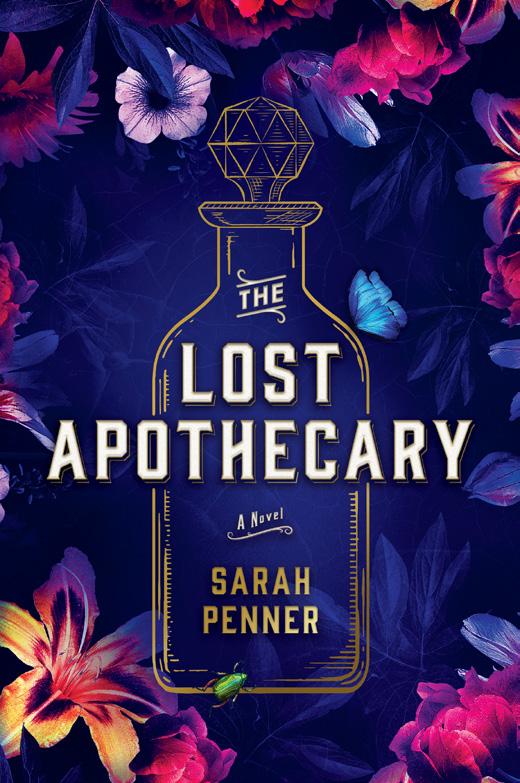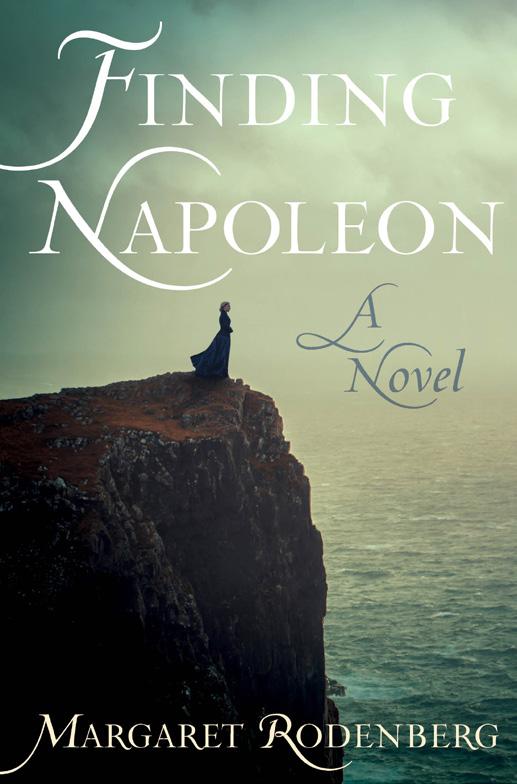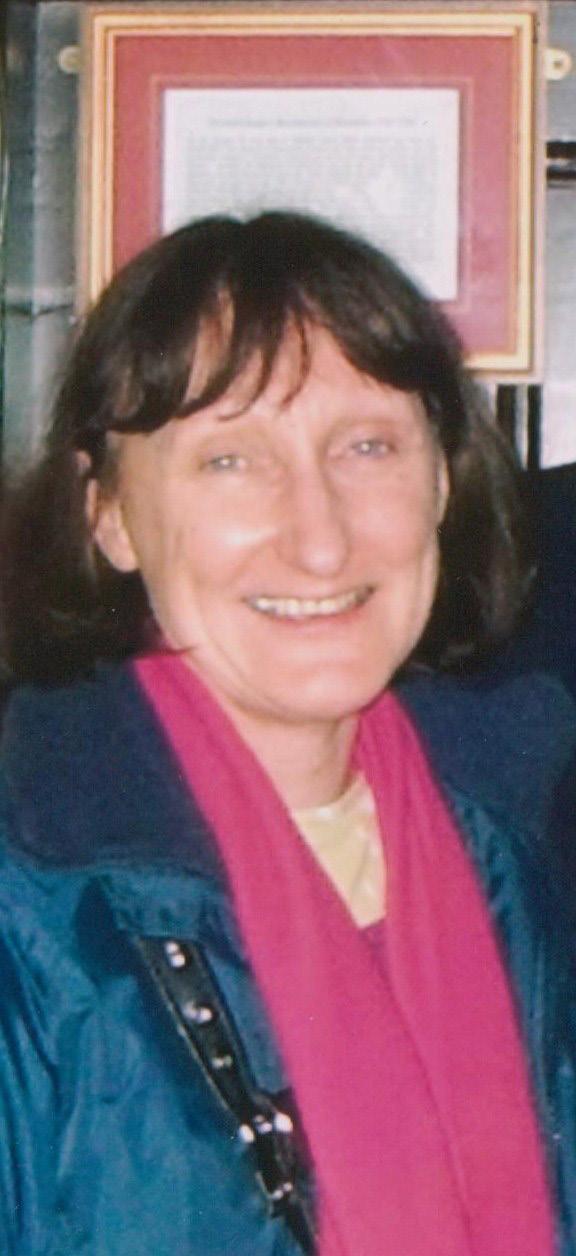
8 minute read
New Voices
Exploring the twists and turns of history, debut novelists Asha Lemmie, Sarah Penner, Frances Quinn & Margaret Rodenberg invite us into worlds merging fact and fiction.
Asha Lemmie
Advertisement

© Lenka Drstakova
Sarah Penner
© Laura Foote

Frances Quinn Margaret Rodenberg

The Lost Apothecary (Park Row, 2021) by Sarah Penner was inspired by a treasure hunt. As Penner describes it: “In the summer of 2019, long before pandemic-related lockdowns, I found myself standing in the mud of the River Thames in central London, wearing blue rubber gloves and a pair of old tennis shoes. I was mudlarking—hunting the river for old treasures. My story begins with one woman’s discovery of a mysterious vial on the banks of the River Thames. The vial is connected to a string of unsolved murders two centuries ago and the female poisoner behind them—an apothecary who sells welldisguised poisons to other women seeking freedom from the men who have wronged them.
“The Lost Apothecary is very much a story about women controlling their own destinies. There are dark aspects to the story—like the burden of secrets and the destructive pursuit of vengeance—but it is also a story of hope and the way women can protect, honor, and free one another, even when separated by the barrier of time. While researching this book, I loved digging into historical documents and antiquated ephemera, particularly those relating to 18thcentury London. Over the last few years, I’ve happily passed many an afternoon in the Rare Books room of the British Library, my head buried in fragile manuscripts from bygone eras. I’ve studied firsthand accounts of apothecaries, druggists, and poisoners. (I know enough to be dangerous, as they say.) So, although The Lost Apothecary is a work of fiction, I have done my best to research and craft a story that is true to history.”
What has delighted and thrilled Penner, she says, is that “The Lost Apothecary has been picked up in Canada, the UK, and eleven territories worldwide. It’s an interesting time to publish a book, but I hope my debut novel serves as an invitation for readers to escape our present reality, if only in the imagination, and join me on the banks of the River Thames. Together, we can begin to unbury the secrets belonging to the lost apothecary. I only ask that readers tread carefully—for the apothecary is a clever woman and a master of disguise.”
Asha Lemmie’s Fifty Words for Rain (Dutton, 2020) is set in post–World War II Japan, and her main character, Nori, is a girl growing up against a backdrop of a legacy of war and tradition.
Lemmie graduated from Boston College with a degree in English Literature and Creative Writing. However, she had started writing Fifty Words for Rain when she was sixteen years old. “Nori came to me in much the same way as my daydreams. I knew I wanted to tell a story about a girl who belongs nowhere, and who blossoms all the same, but I never intended to write a novel. I only sought to find a release for a story that grew bigger and bigger, and eventually, became too much for me to hold inside my head.
“I always loved reading books, and I have always loved writing, but it was not until this idea that it occurred to me that I could ever be an author. I did not understand how one could possibly take an idea from a seed, and turn it into a fully-fledged work of art that could reach people. I didn’t understand how one could take that first great leap of confidence and faith, knowing that the odds were unfavorable, knowing that long years could be spent on something that would likely live and die in a drawer in my desk.”
However, because Lemmie is “a natural-born performer, a trained musician,” she says, “there is no greater horror to me than devoting myself to something that will never be seen. I didn’t understand how one could take such a risk—until Nori. My desire to finish her story, to make it sing, blotted out my fear of failure. I wrote and rewrote, I researched, I took rejection on the chin. Whatever it took to do her justice, I was willing to do.”
She even, she continues, “snuck off to Japan as often as I could, with money I didn’t really have. I spent years learning the language, and crystallizing a feeling I was already familiar with: the feeling of being in a place that is familiar, beloved even, but unalterably foreign. Ten years later, I am an author, and Fifty Words for Rain is in the world. I have come to appreciate that Nori and I share an ultimate triumph: both of us refused to be erased without making a mark.”
Finding Napoleon (She Writes Press, 2021) by Margaret Rodenberg delves into the life of Albine de Montholon, Napoleon’s last lover, and also explores Napoleon’s interest in writing romantic fiction.
From the moment that Rodenberg heard about “young Napoleon Bonaparte’s attempt to write a romantic novel,” she relates, “I vowed to finish it for him. I’d lived in France as a young teen and still loved its language and history. Since I planned to write a novel, the idea united my passions.”
Rodenberg’s next step was to refine “the concept: that the defeated Napoleon in exile would finish his youthful manuscript as a gift for his toddler son. Since the aging emperor’s view of his adolescent idealism drove the story, I avoided his middle years of battles and geopolitics. But to ghostwrite for Napoleon, I had to know him as a person.”
To achieve her aim, she carried out extensive research and “visited Napoleonic sites in France and Corsica. But the big prize was




St. Helena Island, the site of his second exile and where much of the novel takes place. A tiny British-governed island in the South Atlantic, it remains one of the most remote inhabited spots in the world. Napoleon considered it an ‘accursed place,’ where ‘the soul wears out the body.’”
Today, as Rodenberg points out, “the French lovingly maintain Napoleon’s two residences and his first gravesite. Alone in the silence of Napoleon’s musty rooms, gazing out his windows at the windswept plain that gave way to interminable gray ocean, I opened my imagination to a deeper story. A year later, in Santa Barbara, California, when I held some of the handwritten pages of Napoleon’s original manuscript, my inspiration was complete. Meanwhile, the role of audacious Albine de Montholon—the member of Napoleon’s exiled entourage who became his last lover—grew in importance. History often casts this feisty survivor of the Revolution and her husband as traitors to Napoleon.”
However, Rodenberg didn’t believe it was “that simple.”
By the time Finding Napoleon was completed it had “three intertwining threads: Napoleon’s defiant struggle after he’s lost everything; the adaptation of his unfinished novel into his romantic origin story; and Albine de Montholon’s zigzag between a liaison with ‘the world’s most famous man’ and bourgeois happiness. So, while an emperor is at the heart of the story, all the big stakes are personal.”
Certainly, the tale of The Smallest Man by Frances Quinn (Simon & Schuster UK, 2021) is one that centres around the personal challenge of one man facing seemingly insurmountable challenges. Quinn, who read English at King’s College, Cambridge, says: “I came across the inspiration for my novel almost by accident. I had an idea for a murder mystery set in the 17th century, featuring a character with a disability, so I Googled to see what kind of lives disabled people had then. Up popped the Wikipedia entry for Jeffrey Hudson, ‘court dwarf’ to Henrietta Maria, wife of Charles 1. By the end of the first paragraph, I’d mentally abandoned the murder mystery and wanted to write about him instead.”
As she discovered, “Jeffrey had an incredible life. He was ten when he was given to the queen as a gift, became a sort of human pet at the court during the lead-up to the Civil War, accompanied her on her mission to buy arms and troops in Holland and was there when she was attacked by Parliamentarian forces. As if that wasn’t enough, he went on to kill a man in a duel, got captured by pirates and enslaved in Morocco, then came home and was put in prison as a traitor. Behind all the adventures, I felt there must be an amazing character – someone who’d been given a difficult hand in life, but grabbed every chance and made something of it.
“It seemed a gift to a novelist, but I soon found out an exciting life doesn’t necessarily make good fiction. A novel needs a shape and a direction, whereas real life meanders about, takes odd turns and has no respect for the need to tie up the ends in the last chapter, all of which was true of Jeffrey’s life. My solution was to create a fictional character, Nat Davy, who has some (though not all) of the same adventures, against the same historical background, but gave me the freedom to write a proper story, rather than a fictionalised biography. He’s the kind of person I think Jeffrey might have been: brave, funny and loyal, but with an impulsive streak that can get him into trouble. I kept a picture of Jeffrey on my desk while I was writing, and though he’s not there in the pages, he was always in my head. I hope he’d approve of the result.”
Lemmie, Penner, Quinn and Rodenberg have all made their mark on historical fiction by adding their own personal touches to the lives of both real and fictional characters whose life journeys they have encapsulated in their novels, and to help their readers circumnavigate the uncharted waters of history.

WRITTEN BY MYFANWY COOK
Myfanwy Cook is an Associate Fellow at two British Universities and a creative writing workshop designer. Please do email (myfanwyc@btinternet.com) if you discover any debut novels you would like to see brought to the attention of other lovers of historical fiction.






